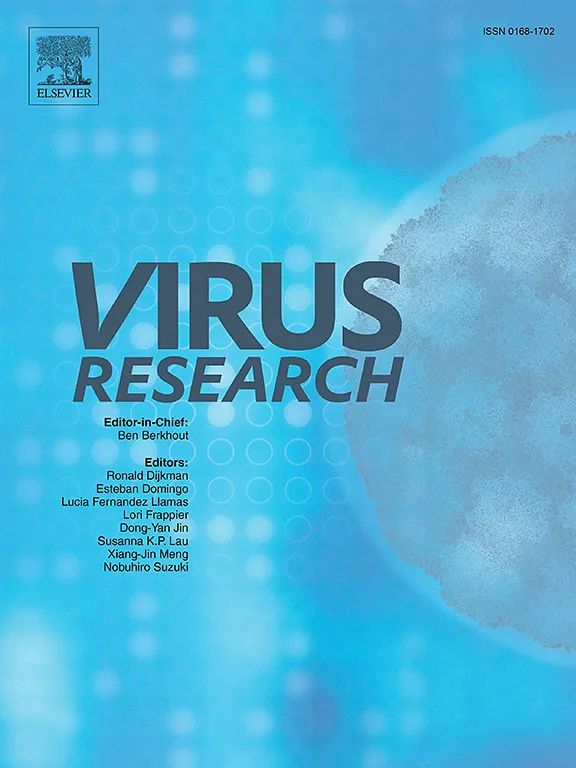Identification of host specificity determinants in brome mosaic virus for rice infection
IF 2.5
4区 医学
Q3 VIROLOGY
引用次数: 0
Abstract
Brome mosaic virus (BMV) is a tripartite positive-stranded RNA plant virus. The genomic RNA2 encodes the 2a protein, which has conserved RNA-dependent RNA polymerase motifs and is required for viral RNA replication. In this study, we have used two BMV strains, F and KU5, and identified two key amino acid residues, 776R and 784T, in the C-terminal non-conserved region of the 2a protein that are critical for systemic infection of BMV-F in rice. While KU5 strain was not able to systemically infect rice, the KU5 mutant strain with two codon changes for 776R and 784T in the 2a gene gained the ability to establish systemic infection in rice, which affects long-distance movement, but not replication or cell-to-cell movement. Through infection assays of KU5 synonymous mutant strains, we demonstrated that amino acids, rather than RNA sequences or secondary structures, are responsible for viral infectivity in rice. Computer predictions and yeast two-hybrid screening revealed that the C-terminal region of 2a functions as an intrinsically disordered region, capable of interacting with host proteins. These results provide molecular insights into the host specificity of BMV and advance our understanding of RNA virus evolution and host-pathogen interactions.
水稻雀麦花叶病毒侵染宿主特异性决定因素的鉴定。
溴花叶病毒(BMV)是一种三边正链RNA植物病毒。基因组RNA2编码2a蛋白,该蛋白具有保守的RNA依赖RNA聚合酶基序,是病毒RNA复制所必需的。在这项研究中,我们使用了两个BMV菌株F和KU5,并在2a蛋白的c端非保守区鉴定了两个关键氨基酸残基776R和784T,这两个残基对水稻BMV-F的全身感染至关重要。KU5菌株不能系统感染水稻,而在2a基因中具有776R和784T两个密码子变化的KU5突变株获得了在水稻中建立系统感染的能力,这种能力影响水稻的长距离运动,但不影响复制或细胞间运动。通过对KU5同义突变株的侵染试验,我们证明了水稻病毒侵染的原因是氨基酸,而不是RNA序列或二级结构。计算机预测和酵母双杂交筛选表明,2a的c端区域是一个内在无序区域,能够与宿主蛋白相互作用。这些结果提供了对BMV宿主特异性的分子见解,并促进了我们对RNA病毒进化和宿主-病原体相互作用的理解。
本文章由计算机程序翻译,如有差异,请以英文原文为准。
求助全文
约1分钟内获得全文
求助全文
来源期刊

Virus research
医学-病毒学
CiteScore
9.50
自引率
2.00%
发文量
239
审稿时长
43 days
期刊介绍:
Virus Research provides a means of fast publication for original papers on fundamental research in virology. Contributions on new developments concerning virus structure, replication, pathogenesis and evolution are encouraged. These include reports describing virus morphology, the function and antigenic analysis of virus structural components, virus genome structure and expression, analysis on virus replication processes, virus evolution in connection with antiviral interventions, effects of viruses on their host cells, particularly on the immune system, and the pathogenesis of virus infections, including oncogene activation and transduction.
 求助内容:
求助内容: 应助结果提醒方式:
应助结果提醒方式:


